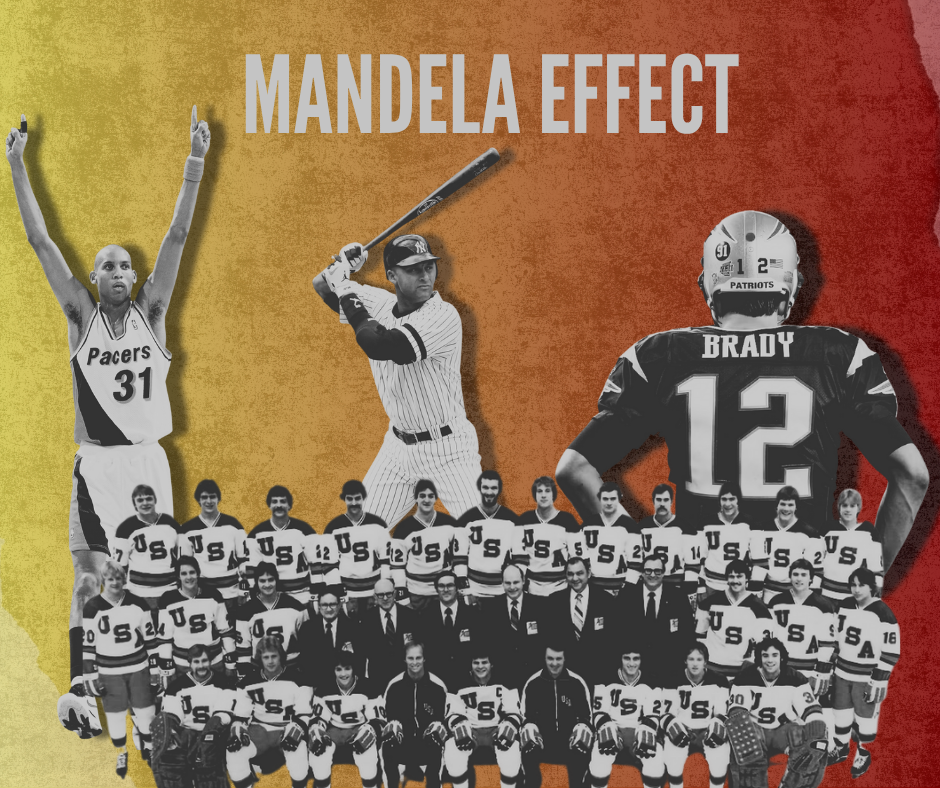The modern sports world is overflowing with data. We have advanced metrics, split stats, historical comparisons, and real-time analysis at our fingertips. And yet, despite all that information, misconceptions and myths still spread like wildfire. Some of them become so widely accepted that they start to feel like fact.
Enter the Mandela Effect, a phenomenon where large groups of people remember something incorrectly. It is usually tied to pop culture or historical events. The term comes from the widely shared but false belief that Nelson Mandela died in prison in the 1980s, almost 30 years before he actually passed away.
Sports have their own versions of the Mandela Effect. Here are four of the most common and widely believed examples.
Misconception 1: Derek Jeter Was a Historically Great Playoff Hitter
Derek Jeter has the rings, the big moments, and the nickname. His playoff résumé is full of iconic highlights. But statistically, his postseason production was not far off from his regular season output. In fact, in some areas, it was actually a bit worse.
His postseason OPS was .838, which is very good, but only a .021 increase from his regular season OPS. His playoff batting average and on-base percentage were both slightly lower. Among players with at least 300 postseason plate appearances, Jeter ranks 11th in OPS, sandwiched between Jose Altuve and Justin Turner, which is not exactly the company you expect for someone considered an all-time playoff legend.
Why this myth exists:
Jeter played more postseason games than anyone in history. He had 734 plate appearances in the playoffs, which is far ahead of second place. That kind of volume creates more opportunities for memorable moments. The image of Jeter in October is built on highlights, not statistical dominance.
Misconception 2: Tom Brady Owned Peyton Manning in the Playoffs
Disclaimer: One of the authors of this article is submitting this section under protest, as he vehemently disagrees with the ideas being presented. But here we go anyway. (and yes, he may be a Patriots fan).
The common belief is that Tom Brady always had Peyton Manning’s number in the postseason. But the head-to-head record says otherwise. Manning actually has a 3–2 record against Brady in playoff matchups.
Yes, Brady won the first two meetings and did so convincingly. Manning threw four interceptions in their first postseason game, then lost 20-3 in the second. Those early losses cemented the narrative that Brady owned the rivalry.
But the story changed.
In 2006, Manning led the Colts to a comeback win over the Patriots in the AFC Championship. He threw for 349 yards and orchestrated a 68-yard game-winning touchdown drive in under 90 seconds.
In 2013, as a Bronco, Manning threw for 400 yards in another AFC title win over Brady. Then in 2015, with a trip to the Super Bowl on the line, Manning’s Broncos edged the Patriots 20–18 in one of the most memorable playoff games of the decade.
Why this myth exists:
Brady won the early battles and had the media behind him. Manning was seen as the regular season guy who could not win the big one. But history tells a different story, especially when the stakes were highest.
Misconception 3: The Miracle on Ice Was the Gold Medal Game
Everyone remembers Team USA’s incredible upset over the Soviet Union at the 1980 Winter Olympics. But what many forget is that it was not the gold medal game. That iconic moment happened in the semifinal round.
After the Miracle on Ice, the United States still had to beat Finland to win gold. They did, winning 4–2 and finishing the tournament unbeaten. But it is the Soviet game that lives in American sports lore.
Why this myth exists:
The game against the Soviets is the one that mattered emotionally. It was Cold War symbolism on ice. It was a miracle. And the movie title sure does not help anyone remember the Finland game.
Misconception 4: Reggie Miller Was a No-Doubt NBA 75 Player
Reggie Miller is one of the most recognizable NBA names from the 1990s. But his inclusion on the NBA 75 list sparked real debate, and for good reason.
In 18 seasons, Miller was a five-time All-Star. He never made an All-NBA First or Second Team. He never won a championship. His career averages – 18 points per game, 3 rebounds, 3 assists – are solid but not overwhelming. He made about as many threes per game as Karl-Anthony Towns, on lower efficiency.
Mitch Richmond, Dale Ellis, and even Glen Rice had similar or better peak seasons, yet none of them made the list.
Why this myth exists:
Two reasons: the three-point shooting legacy and the choke sign. Miller hit big shots on big stages, especially against the Knicks, and had one of the most memorable personas of the 1990s. He was a clutch performer and a media favorite. But résumé-wise, there are at least a dozen guards with stronger cases.
Parting Shot
Narratives matter. In fact, they may matter more than stats when it comes to legacy, perception, and recognition in sports.
Stats tell us one version of the story, but emotion tells another. And emotion usually wins.
So the next time you hear a common take repeated like gospel, take a second to dig in. You might be surprised by what you find.
Want more like this? Come hang with us here:
Join our newsletter for weekly updates, banter, and more.




